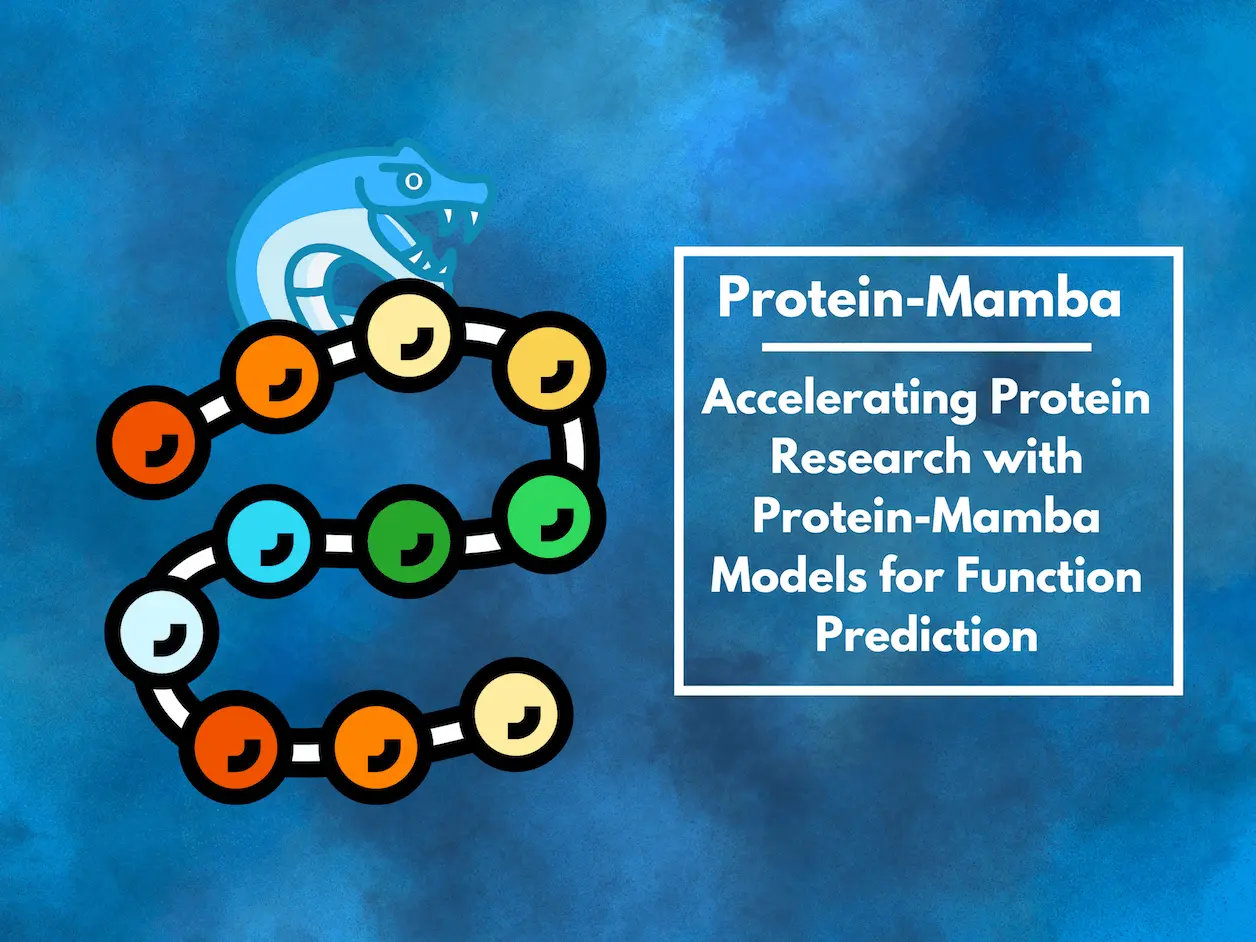Determining the function of proteins is one defining aspect of molecular biology that also carries great potential in drug discovery and development. A better comprehension of what the proteins do leads to faster discovery of valuable drug targets, which in turn saves the resources related to laboratory work, the purpose of which is the search for active compounds. In a study published in Nature Communications, a group of researchers from Rensselaer Polytechnic Institute, Stanford University, University of Minnesota Twin Cities, KAIST, and the University of Illinois Urbana-Champaign have developed a new model, Protein-Mamba that they believe will change the game in the field of protein function prediction.
The Challenge of Protein Function Prediction
Cells employ proteins to perform different tasks, and therefore, proteins are said to be the workhorses of cells. The challenge is that there is a complicated relationship between the sequences of the amino acids forming a protein and its structure; the arrangement of the protein in space defines its functions. Conventional technologies often struggle to capture the nuances of protein function, leading to inaccurate predictions.
Protein-Mamba: A Two-Step Methodology
Protein-Mamba employs a two-step methodology to address the protein function prediction problem.
This method involves:
Pre-training: In this case, the model undergoes pre-training, which means training it on an unlabeled protein sequence dataset. This means that the model is exposed to a vast amount of protein data without any explicit labels indicating their functions. With exposure to this kind of diverse sequences, the model is expected to gain insight into the relationships and structures within protein sequences. This kind of pre-training is like teaching a child how to speak before teaching that child the words and grammatical rules of the language.
Fine-tuning: Finally, after the model has achieved a certain base level through the pre-training, it is fine-tuned on specific labeled datasets. In these labeled datasets, there are protein sequences along with the functions performed by those proteins. Thus, the model can further enhance its performance on tasks whose data has been previously labeled. This is comparable to a child learning a new language but first focusing on vocabulary and grammar.
Advantages of the Two-Stage Training Method
There are several advantages attached to the two-stage training strategy:
Greater Generalization: The purpose of pre-training the model is to permit the model to learn the peculiarities and characteristics that span quite several protein functions. This is essential for the model, which aims to deploy its usage to other sequences of proteins that have been put forth for the first time.
Reduced Dependence on Labeled Data: In cases where there is scarcity or high costs associated with collecting labeled data, the model can still acquire sufficient useful knowledge from the available unlabeled data through pre-training.
Enhance efficiency: Fine-tuning the model using a labeled dataset helps the model instantaneously change the prediction to the desired output as per the requirements, which is more efficient than a complete training regime where the model has to be built from the ground up.
In a word, Protein-Mamba has made it possible to combine expectations of unsupervised and supervised training to achieve enhanced protein function prediction. Overall, this strategy is a perfect example of how machine learning offers great potential and influences multi-task-oriented research in modern times.
The Power of Self-Supervised Learning
Self-supervision is singled out as one of the strong suits of Protein-Mamba. Using such a large amount of unlabeled data proved beneficial to the researchers because it eliminated the need for expensive and labor-intensive data identification. This built-in capability of the model enables it to use the structural and functional correlations present in protein sequences, leading to better prediction accuracy.
Experimental Results
Protein-Mamba was subjected to multiple functional tests, such as predicting protein solubility, thermostability, fluorescence, and enzyme function. Protein Mamba scored well above all other existing methods undertaking these tasks. This shows the model’s competence in understanding how protein structures relate to their multiple functions.
Applications in Drug Discovery
The Protein-Mamba is useful in different areas, including drug discovery. By properly predicting the protein’s purpose, researchers can find the drug targets, analyze the interactions of the target with drugs, and design more effective drugs. This would quicken the procedures of inventing new treatments for many diseases.
Future Directions
Still, although Protein-Mamba is a great invention, several areas can be developed further. These may include effective strategies for personalized medicine, which aim to integrate protein function information and genomic (or transcriptomic) data. This could assist in a more detailed understanding of the functions performed by the proteins in a cell and the diseases associated with them. Besides, it would be interesting to find out whether Protein-Mamba could be useful for predicting intramolecular and intermolecular protein-ligand binding processes.
Conclusion
Protein-Mamba represents a significant advancement in the field of protein function prediction. By leveraging self-supervised learning and a two-stage training approach, the model has demonstrated superior performance across various tasks. As researchers continue to explore the potential of Protein-Mamba and related methods, we can expect to see even more exciting developments in drug discovery and other areas of molecular biology.
Article Source: Reference Paper
Important Note: arXiv releases preprints that have not yet undergone peer review. As a result, it is important to note that these papers should not be considered conclusive evidence, nor should they be used to direct clinical practice or influence health-related behavior. It is also important to understand that the information presented in these papers is not yet considered established or confirmed.
Follow Us!
Learn More:
Anchal is a consulting scientific writing intern at CBIRT with a passion for bioinformatics and its miracles. She is pursuing an MTech in Bioinformatics from Delhi Technological University, Delhi. Through engaging prose, she invites readers to explore the captivating world of bioinformatics, showcasing its groundbreaking contributions to understanding the mysteries of life. Besides science, she enjoys reading and painting.
















